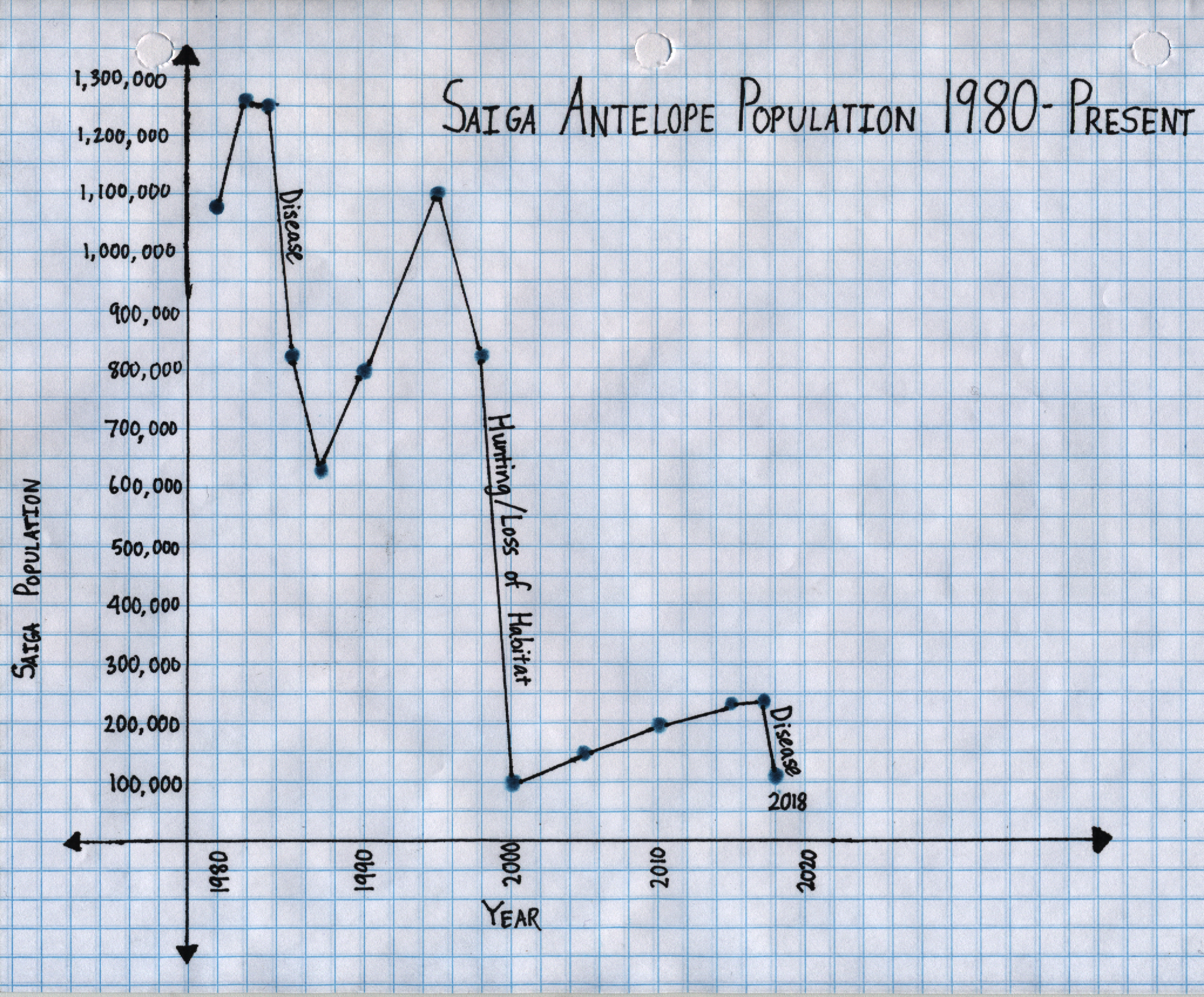The Saiga Antelope: Nature’s Scariest Vanishing Act
The antelope’s near extinction due to increased temperatures is yet another sign of impending climate change. But as this die off proved, it doesn’t take much anymore.
February 16, 2018

In May 2015, a BBC camera crew and research team gathered on isolated grasslands in central Kazakhstan to film the Saiga antelope, a critically endangered species, giving birth to offspring. Little did they know they were about to witness one of the most bizarre and tragic animal mysteries in recent memory. In a matter of days, thousands of Saiga antelope lay dead, their bodies dotting the landscape. Although investigations were conducted, scientists were unable to explain why the antelope suddenly died, all within mere days of each other. In the end, the death count totaled more than 200,000, leaving only an estimated 100,000 to survive. Last month, two and a half years after the antelope’s near extinction, scientists linked the event to Pasteurella multocida, a bacteria present in the Saigas’ bodies. Normally harmless, it reacted to an increase in environmental temperature, which instantly made it lethal. By itself, this situation is already a cause for concern, but it’s also yet another demonstration of how climate change has become a danger that should no longer be ignored.
The bacteria Pasteurella multocida has been identified as the cause of the Saigas’ deaths, which is concerning because it isn’t generally malicious. Many mammals, including birds and domestic cats and dogs, have it in their respiratory systems, and it is present in Saigas’ tonsils. However, increases in humidity and temperature in the ten days before the die off caused to the bacteria to infect the Saiga with hemorrhagic septicemia. This disease usually occurs in cattle and water buffalo, and the consequences are immediate. The Saiga suffered a massive infection, which caused blood poisoning, internal bleeding, and lethargy. Groups who were infected didn’t have any survivors.
Comparable Saiga extinction events occurred in 1981 and 1988, when the antelopes died for similar reasons. Since the tonsils are close to the environment of the air, warm weather caused the bacteria to rapidly grow, killing large numbers of animals. Although the Saiga survived, and have historically been resilient because they reproduce quickly, it is unclear whether they can continue to withstand die offs like this last one. Their population has been dwindling due to hunting, and because of climate change, hemorrhagic septicemia could occur more often. There will be less Saiga to face increasingly frequent instances of deadly diseases, meaning their species may not be around for much longer if current trends continue.
According to fossil evidence, the Saiga antelope has existed for at least 12,000 years, dating back to the late Pleistocene Era. Originally, the Saiga’s habitat stretched across Eurasia, from present-day England and France to northern Siberia, but they currently inhabit the grasslands and arid deserts in Central Asia. Because they are a migratory species, Saiga prefer flat wide open areas where they can run freely. They live together in large herds of up to a thousand members and have high rates of reproduction. With ideal conditions, a population can increase by 60 percent in one year.
But because the Saiga are migratory, they are more susceptible to changes in climate. Harsh winters with heavy wind and snow can prevent them from grazing, and climate change has caused increasing aridity of grasslands. In 2014, it was estimated that fourteen percent of all available pasture land was considered useless.
Although the magnitude of the 2015 die off was unprecedented, mass mortalities are not unusual for the Saiga. The grass on the plains is most abundant around the time they breed, meaning they have to give birth in a short amount of time before the summer heat dries up the vegetation. This puts the females under a tremendous amount of physical stress, leaving them more vulnerable to disease. Calves aren’t safe either, since the harsh climate can cause many of them to die from exposure. Hunting has also been a major issue. Since Saiga meat is popular, skin is used for leather, and male horns are exported for their uses in traditional Chinese medicine. This has distorted the sex ratio, which negatively affects reproduction.
The most prominent feature of the Saiga is its unique muzzle which helps it survive the brutal conditions of its environment. Its long and prominent nose looks similar to that of an elephant. One of its two main functions is to heat up the air that the antelope breathes in since temperatures Central Asia are usually very cold. In this way, the Saiga can maintain its overall body heat without expending any extra energy. The other purpose of the nose is to act as a natural filter. When the Saiga travel in herds across dry grasslands, the surrounding air becomes filled with dust. There are mucus glands and hairs inside the nose which prevent too much dirt from entering the animal’s respiratory system.
Now that we know why two-thirds of the world’s Saiga population was wiped out, we need to change our perspectives on climate change. It is important to realize that it’s not a problem that will suddenly run us over; it is an issue that has been gradually making its mark on the world and the species that inhabit it. Clearly, it makes natural disasters more severe, and last year was a perfect example. But what is concerning at this point is the more subtle problems it causes. Diseases caused by warmer weather will arise more, which could cause the extinction of endangered animals like the Saiga and create new endangered species. We’re beginning to see that climate change doesn’t have to cause a category five tornado or hurricane in order to be dangerous. Sometimes, it’s the little changes in temperature that can generate the biggest problems. Keep in mind that every time we leave a light on too long or drive when we could walk, we are contributing to these variations. And if it keeps going, there will be a point of no return.










